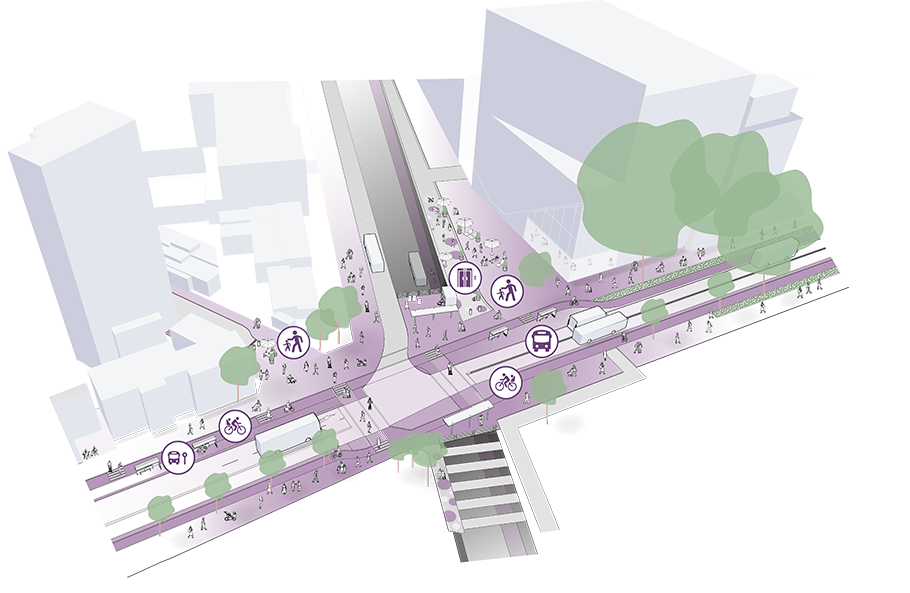Symonds Street - redesigned to support the learning quarter
About this opportunity
Symonds Street offers significant opportunity to be redesigned over the medium term to support University of Auckland and AUT's functions and goals as part of Transformational move 4: The Learning Quarter.
Why we want to do this
The junction of Symonds and Wellesley streets should be the beating heart of the Learning Quarter. The CCMP envisages Symonds Street as a high-quality urban environment to serve as a gateway fitting for Auckland’s world-class universities.
Enabled by Access for Everyone (A4E), future design changes will prioritise pedestrians, cyclists, and public transport, rather than acting as a through route for general traffic.
Public transport priority will improve journeys to and between university precincts, helping unify the campus environment.
Continuous protected lanes for cyclists and micro-mobility users will further improve accessibility, while new pedestrian spaces will create opportunities for students to gather.
How this would happen
Any future changes to Symonds Street will be progressed in collaboration with both universities. Consistent with the Transformational move 4: The Learning Quarter, future changes may include:
- a transit street without general traffic through the heart of campus activity on Symonds Street
- preserved access for service vehicles, emergency vehicles, and other vehicles central to university business
- continuous protected cycle lanes from Upper Symonds Street to Britomart
- more legible and spacious bus stops at the universities' doorstep
- an interchange with Wellesley Street buses passing beneath Symonds Street
- an improved public realm and narrowed carriageway that is safer and easier for pedestrians to cross.
Symonds Street explained

Symonds Street is a key gateway to the Learning Quarter.
Enabled by refined area-wide traffic patterns, the CCMP envisages Symonds Street as a high-quality urban environment prioritising pedestrians, cyclists, and public transport.
Traffic movements are tailored to university business access needs rather than a through route for general traffic.
These changes support the ongoing evolution of the area as a city campus aligned with university development plans:
- More legible and spacious stops will speed bus journeys and facilitate easier connections to disparate campus buildings.
- Widened footpaths, expanded public realm and easier pedestrian crossings.
- New public spaces, and multi-purpose shared streets.
- Bus-only streets with access allowed to vehicles on university business, service vehicles and emergency vehicles.
- Continuous protected cycleways.
Related opportunities





